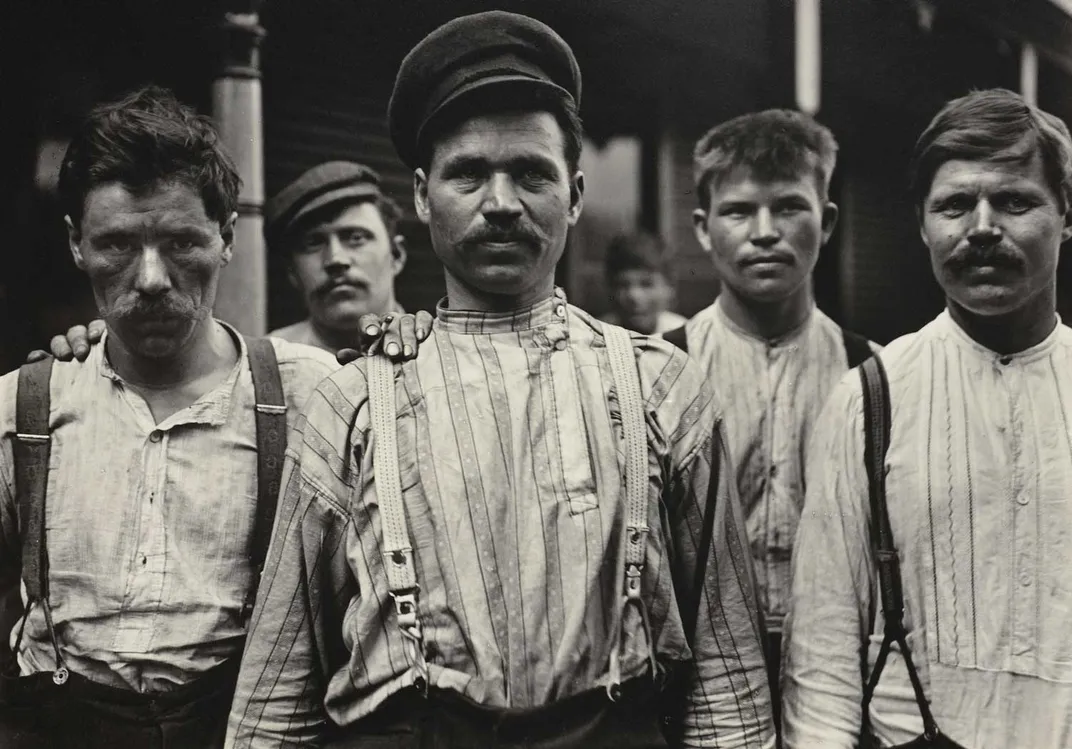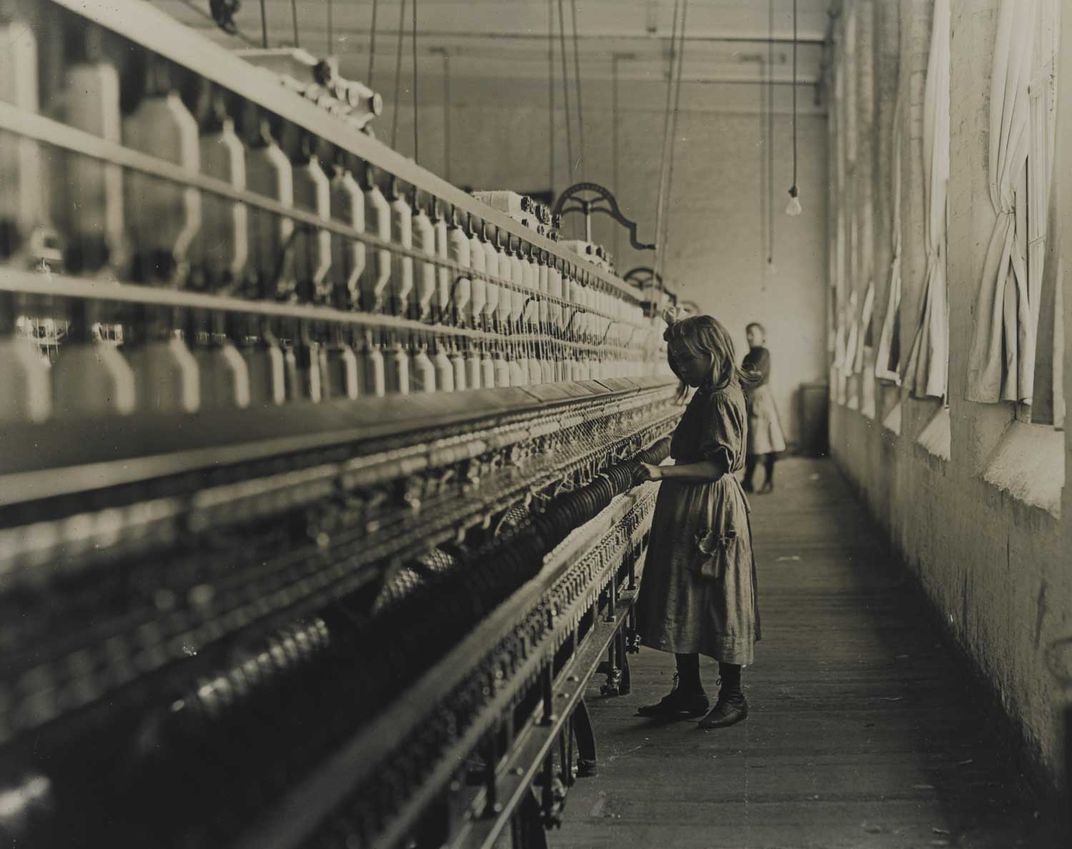Starting at the Source: Lewis Hine and Labor
Between 1904 and 1926, the American photographer Lewis Hine (1874–1940) photographed countless newcomers at the Ellis Island Immigration Station in New York Harbor. While there, he trained his lens on people of all ages, from infants to the elderly, coping with the emotions and monotony of the bureaucratic processes. Many of these photographs, including the Young Jewess Arriving at Ellis Island (1905), now in the exhibition The Sweat of Their Face: Portraying American Workers (on view through September 3, 2018), have become the go-to images used to illustrate the history of immigration to the United States at the turn of the twentieth century.
/https://tf-cmsv2-smithsonianmag-media.s3.amazonaws.com/blogging/featured/blog_npg_ellis_island_by_hine.jpg)
Between 1904 and 1926, the American photographer Lewis Hine (1874–1940) photographed countless newcomers at the Ellis Island Immigration Station in New York Harbor. While there, he trained his lens on people of all ages, from infants to the elderly, coping with the emotions and monotony of the bureaucratic processes. Many of these photographs, including the Young Jewess Arriving at Ellis Island (1905), now in the exhibition The Sweat of Their Face: Portraying American Workers (on view through September 3, 2018), have become the go-to images used to illustrate the history of immigration to the United States at the turn of the twentieth century.
Hine first went to Ellis Island at the behest of the Ethical Culture School (ECS) in Manhattan, where he taught nature studies. His supervisor, Frank Manny, recalled that the project had grown out of a conversation during a “Pilgrim Celebration” and that the hope was that the photographs would encourage students to equate people arriving at the Immigration Station with those who had landed at Plymouth Rock. From its very beginning, therefore, the Ellis Island photographs were meant to rouse sympathy from their viewers for the anonymous newcomers mostly from Eastern and Southern Europe. Hine continued using photography to foster empathy and later in life considered his Ellis Island work as the beginning of his extended and in-depth documentation of the American labor force.

As part of a burgeoning and active community of Progressive Era organizers based in New York, Hine was often called upon to participate in reform-minded endeavors. In late 1907, for instance, he photographed workers in the city of Pittsburgh for the Russell Sage Foundation-funded project, the Pittsburgh Survey. His photographs were used as illustrations in the multi-volume groundbreaking sociological study of the city, its factories, housing, and people, including foreign-born workers such as those depicted in Russian Steel Workers, Homestead, Pennsylvania (c. 1907).

While working on behalf of the National Child Labor Committee, Hine traveled across the country to photograph child laborers in fields, on streets, and in factories. Children as young as nine years old, including Sadie Pfeifer, or even younger, worked long days in the mills with few regulations to ensure their safety (Child Labor, c. 1908). For both the Pittsburgh Survey and the NCLC, Hine’s photographs were meant to make others aware of the dangerous circumstances in which children and steelworkers found themselves. Above all, these images were to encourage lawmakers and private citizens to find ways of improving these perilous work conditions.
Throughout his decades of reform-inspired projects, Hine revisited his Ellis Island images as his source. The people in those photographs, to him, were also the ones who went on to populate the nation’s mines and factories. From his earliest days in photography, therefore, Hine continually brought viewers face to face with the people whose labor fueled the American economy.
